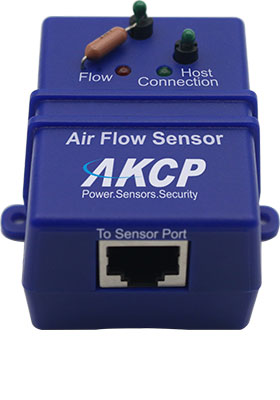Copyright © 2025 KVMGalore® - All rights reserved.

Airflow Sensors
AKCP airflow sensors are a switch-type on/off style sensors that measure the presence or the absence of airflow with a threshold setting to determine their sensitivity
Read more below...

1) Airflow Sensor, 15 Feet Model No. AFS15  In stock
In stock

2) Airflow Sensor, 40 Feet Model No. AFS40  Ships within two weeks or less
Ships within two weeks or less

3) Airflow Sensor, 5 Feet Model No. AFS00  In stock
In stock

4) Airflow Sensor, 60 Feet Model No. AFS60  Ships within two weeks or less
Ships within two weeks or less
AKCP airflow sensors
measure the presence or the absence of airflow
AKCP airflow sensors are switch type on/off style sensors.
A threshold can be set to determine the sensitivity of the sensors. Ideal for placing in-front of air intake or exhaust fans to indicate if the airflow is sufficient and as an early warning of failures in the cooling sytems or fans. They are best used to send an alert in the case of a fan, AC failure or when airflow is present when it should not be.
AKCP airflow sensors are designed for systems that generate heat in the course of their operation and a steady flow of air is necessary to dissipate this heat generated. System reliability and safety could be jeopardized if this cooling airflow stops.
AKCP airflow sensors are placed in the path of the air stream, where the user can monitor the status of the flowing air. AKCP airflow sensors are not a precision measuring instrument. These sensors are meant to indicate the presence or the absence of air flow - not to measure the amount of airfow.
In addition to the sensors ON or OFF status, AKCP airflow sensors' condition can also be read via an SNMP get using its OID. SNMP traps sent when critical. SNMP polling via get available. Web browser interface available. When an alarm condition is activated the description and location of the fault can be sent via email, page.









